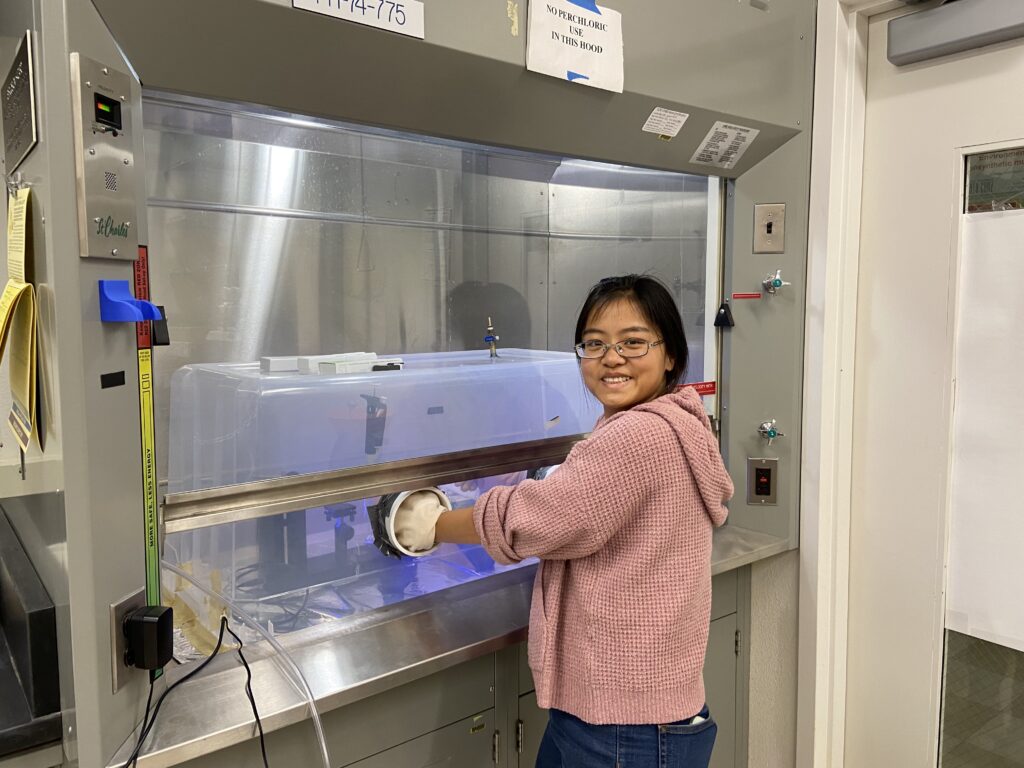Welcome to my lab! It is located in the Applied Engineering and Technology (AET) Building of the University of Texas at San Antonio. As a faculty member of the Department of Physics and Astronomy of UT San Antonio, I am leading the Planetary Material CHaractErization Facility (PMCHEF), funded by the NASA Planetary Science Early Career Award.
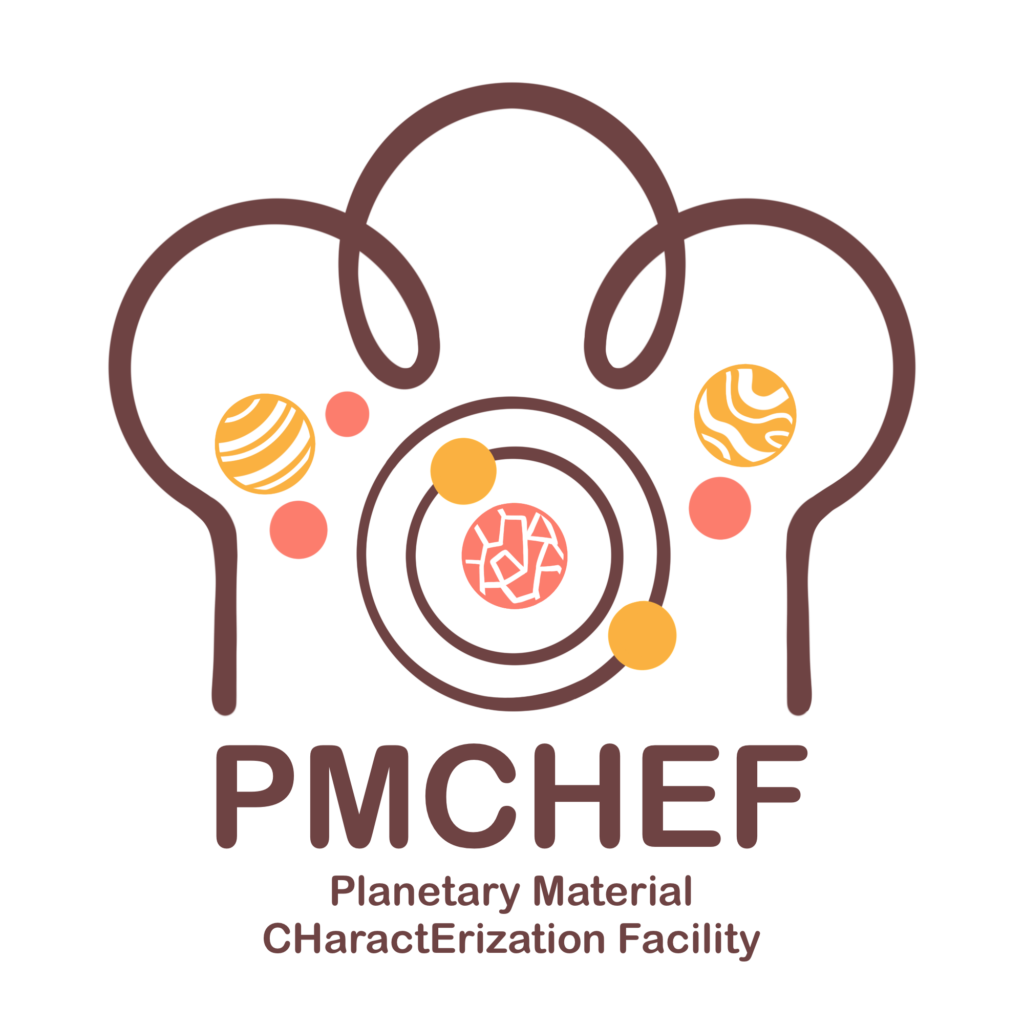
Our lab focuses on characterizing important physical properties of planetary materials on nano- and micro-scale to understand various important atmospheric, surface, and interior processes in solar system planetary bodies and beyond. We are also a powerhouse that tests engineered materials for space purposes. All instruments in our lab operate under controlled environments, such as dry nitrogen (we can easily reach sub-ppm levels of H2O and O2) and vacuum, to avoid contamination and degradation of space-related samples.
We have a suite of instrumentation that allows the characterization of the optical, mechanical, surface, thermal, and electrical properties of space and planetary materials:
1) Optical property characterization bench in dry-nitrogen: a Dual J. A. Woollam Ellipsometer System (M-2000 and IR-vase) for measuring the optical constants of thin-film samples from the UV to the mid-infrared (190 nm to 30 µm);
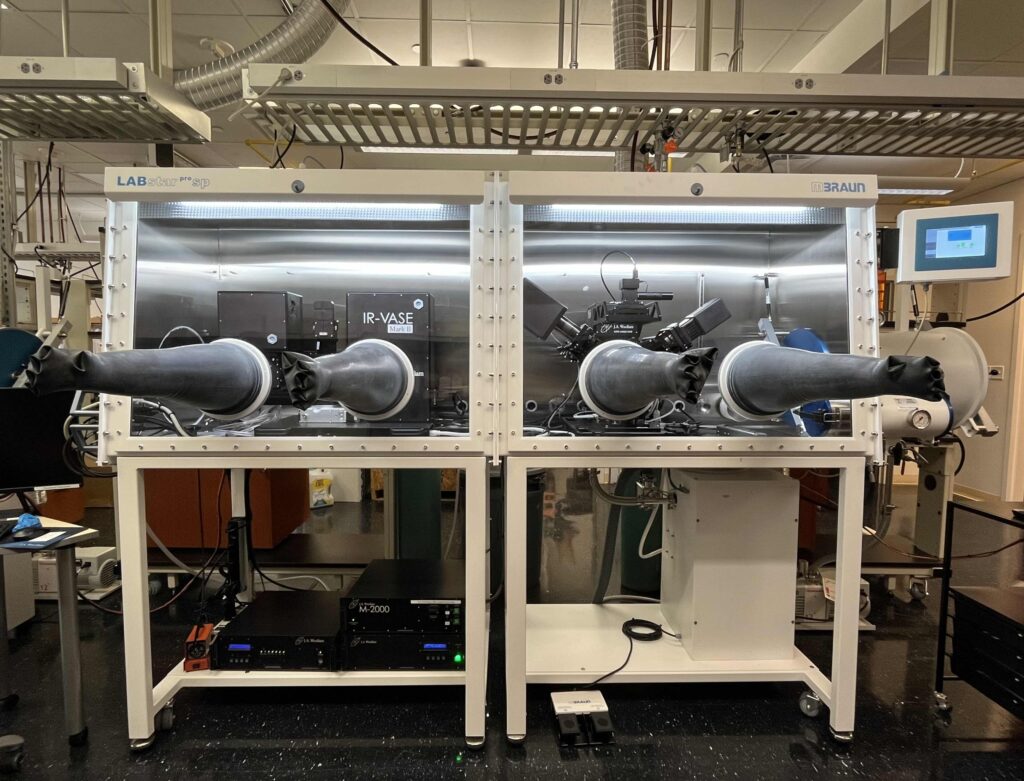
2) Mechanical property characterization bench in dry-nitrogen: a KLA iMicro Nanoindenter for measuring a range of mechanical properties (elastic, plastics, and fracture properties) of small amounts of samples, including thin films and powders;
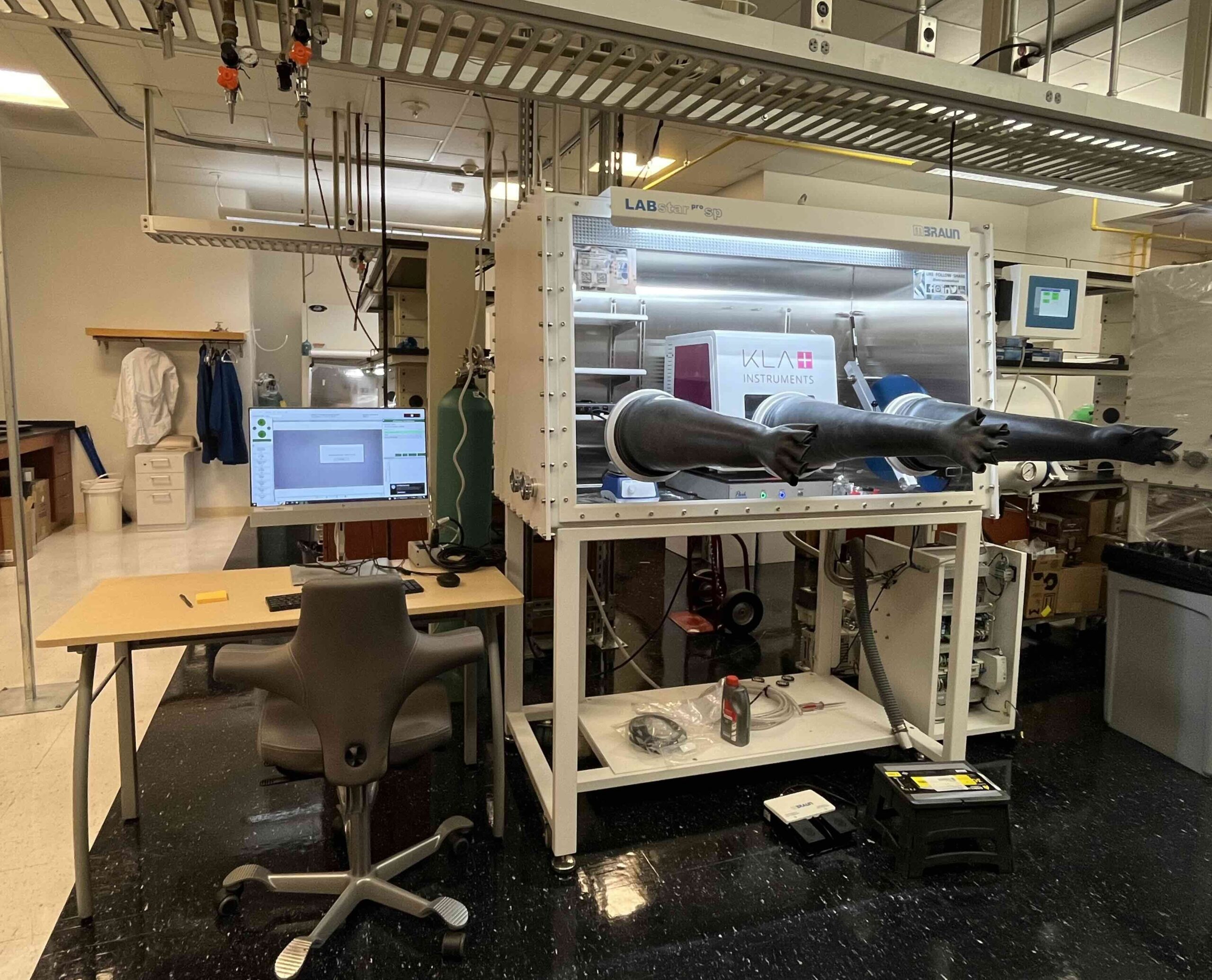
3) Surface, mechanical, and electrical property characterization bench at various environmental conditions: a Bruker Dimension Icon Scanning Probe Microscope that can measure the surface, mechanical, and electrical properties of small amounts of samples, including cohesion, adhesion, nanomechanical, tribocharging, and dielectric properties;
4) Surface property characterization bench: an Ossila Contact Angle Goniometer and Tensiometer, which can be used to measure the surface tensions of liquids through the pendant drop method and surface energies of solids through sessile drop contact angle measurements using test liquids of different surface tensions;
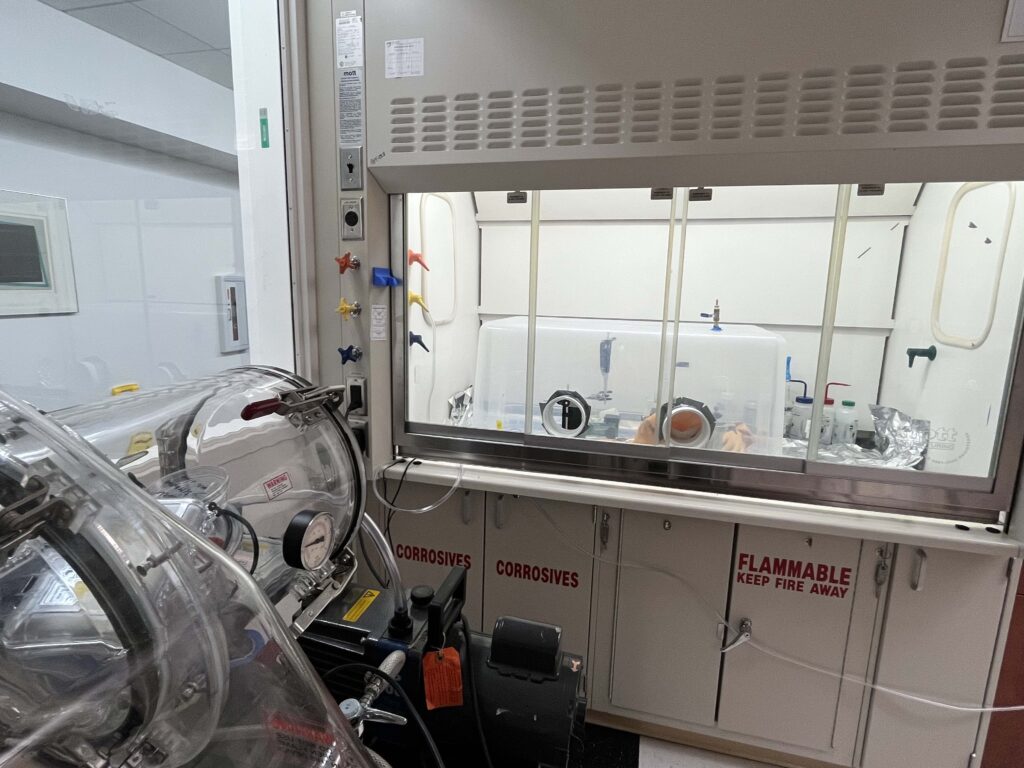
5) Thermal property characterization bench: a home-built dynamic vacuum furnace and vapor sorption system. The system can be used to track the thermal behaviors of solid materials from room temperature to high temperatures (up to 1200 °C) and also allows dynamic analysis of the volatile using an ExTorr Residual Gas Analyzer (RGA).
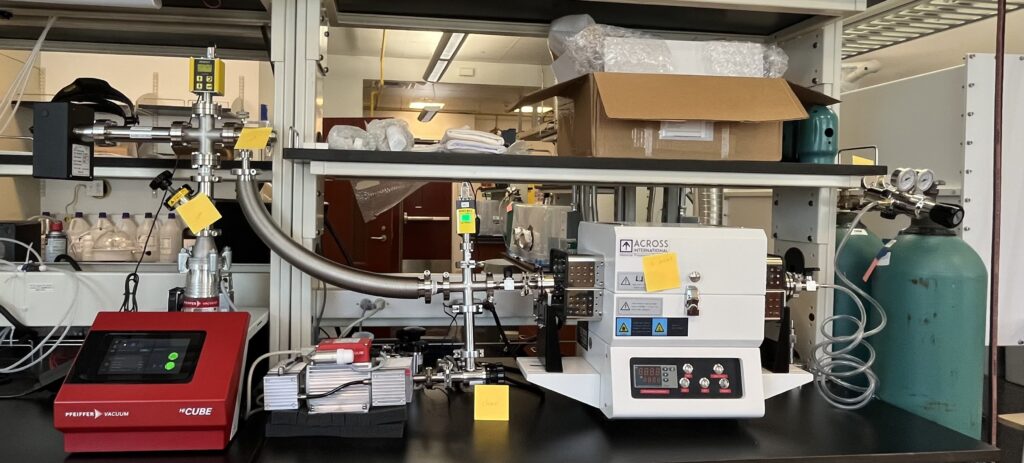
The PMCHEF laboratory is also equipped with a chemical fume hood, vented cabinets for flammable liquids, multiple vacuum desiccators for sample storage, a Satorius Entris II Essential Analytical Balance, a drying/sterilizing oven, a Fisherbrand analog vortex mixer, a Pace Technologies NANO-2000S metallographic polisher, a Branson Ultrasonics M Series Ultrasonic Cleaner, and all other facilities required to safely and successfully complete the characterizations needed for planetary/exoplanetary relevant materials.
—————————————————————————————–
During my postdoc, thanks to the discretionary funding of the 51 Pegasi b postdoctoral fellow, I was able to build a few pieces of homemade, low-cost equipment to conduct planetary and exoplanetary material characterization experiments at UC Santa Cruz and brought them to UTSA.
